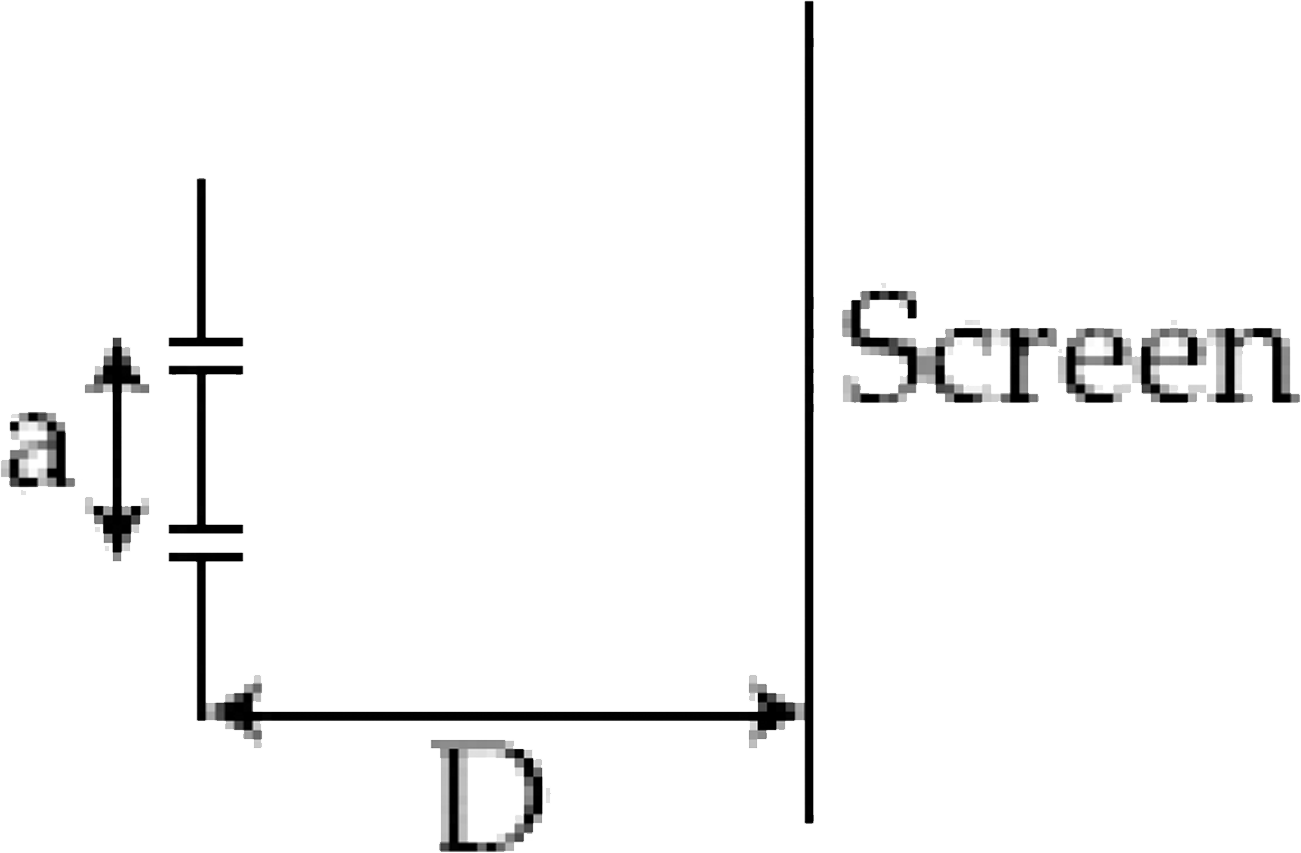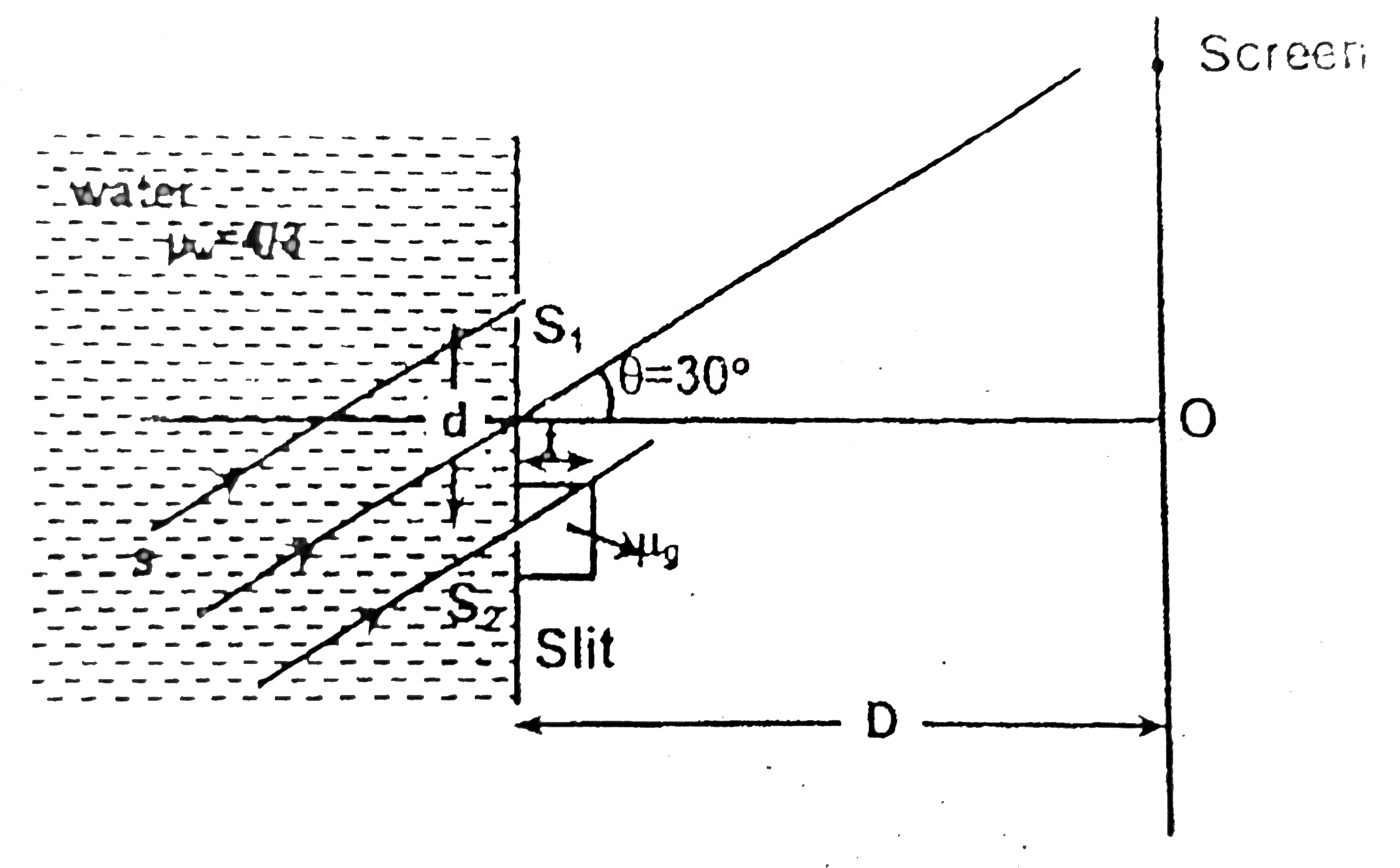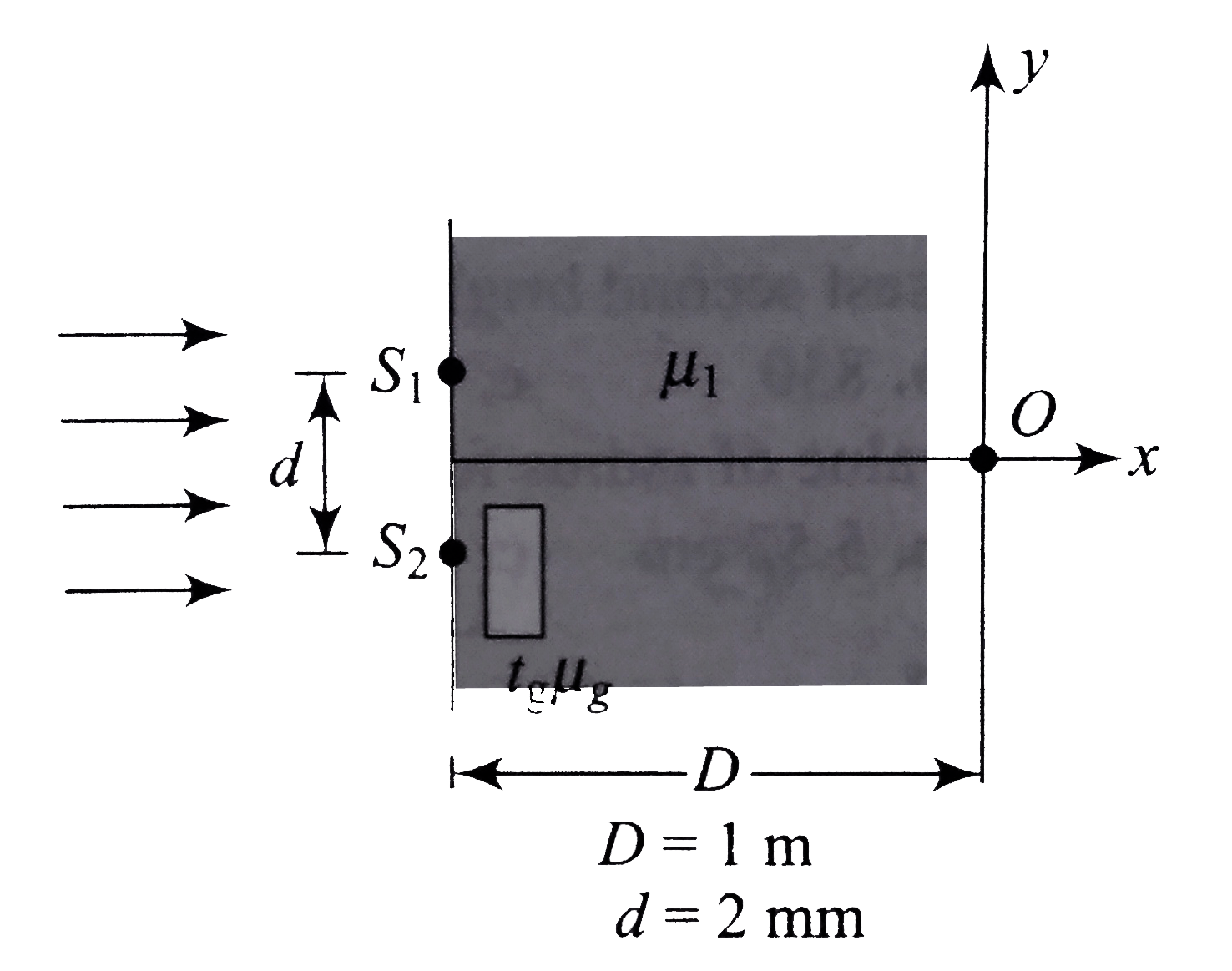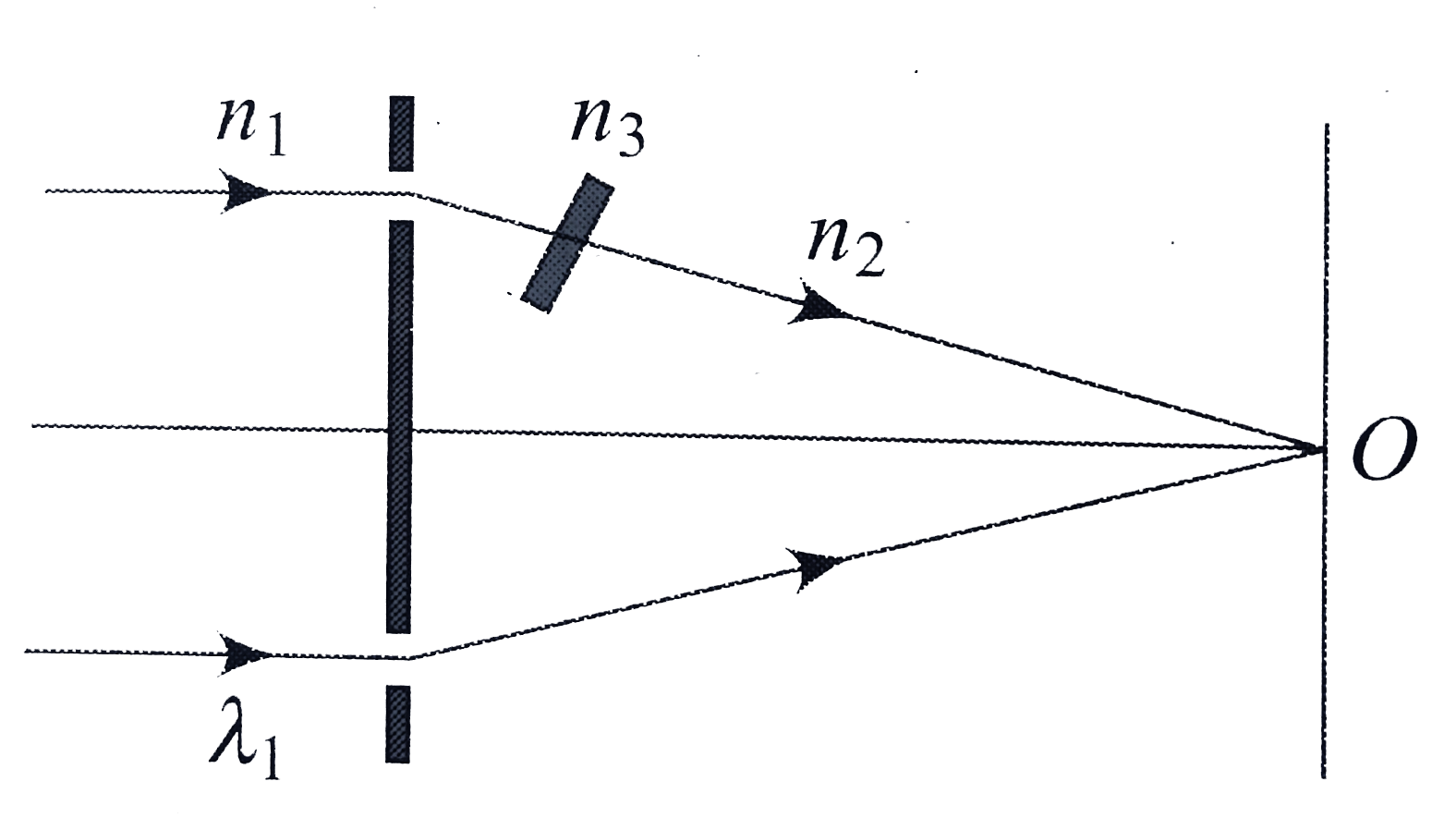In YDSE when slab of thickness t and refractive index μ is placed in front of one slit then central maxima shifts by one fringe width. Find out t in terms of λ and μ.
λ(2μ−1)
2λ(2μ−1)
λ(μ−1)
2λ(2μ+1)
The correct Answer is:C
To solve the problem, we need to find the thickness t of the slab in terms of the wavelength λ and the refractive index μ when a slab is placed in front of one slit in the Young's double slit experiment (YDSE), causing the central maxima to shift by one fringe width.
1. Understanding the Shift in Central Maxima:
When a slab of thickness t and refractive index μ is placed in front of one slit, it changes the optical path length of the light passing through that slit. This causes a shift in the interference pattern.
2. Calculating the Optical Path Difference:
The optical path length for the light passing through the slab is given by:
Optical Path Length=μt
The light that does not pass through the slab travels a distance t without any change in refractive index, so the optical path length for that light remains t.
The change in optical path due to the slab is:
Δ=μt−t=(μ−1)t
3. Relating Shift to Fringe Width:
The shift in the central maxima Δy due to this optical path difference is given by:
Δy=(μ−1)td
where d is the distance between the slits and the screen.
4. Fringe Width Calculation:
The fringe width β in YDSE is given by:
β=λDd
where D is the distance from the slits to the screen.
5. Setting the Shift Equal to One Fringe Width:
According to the problem, the central maxima shifts by one fringe width, so we set:
Δy=β
Substituting the expressions we have:
(μ−1)td=λDd
6. Simplifying the Equation:
We can cancel d from both sides:
(μ−1)t=λD
7. Solving for Thickness t:
Rearranging the equation gives:
t=λDμ−1
8. Final Expression for Thickness t:
Since we need t in terms of λ and μ, we can express it as:
t=λμ−1
(assuming D is taken as 1 for simplicity in terms of the fringe width).
Final Answer:
t=λμ−1
When a slab of thickness t and refractive index μ is placed in front of one slit, it changes the optical path length of the light passing through that slit. This causes a shift in the interference pattern.
The optical path length for the light passing through the slab is given by:
Optical Path Length=μt
The light that does not pass through the slab travels a distance t without any change in refractive index, so the optical path length for that light remains t.
Δ=μt−t=(μ−1)t
The shift in the central maxima Δy due to this optical path difference is given by:
Δy=(μ−1)td
where d is the distance between the slits and the screen.
The fringe width β in YDSE is given by:
β=λDd
where D is the distance from the slits to the screen.
According to the problem, the central maxima shifts by one fringe width, so we set:
Δy=β
Substituting the expressions we have:
(μ−1)td=λDd
We can cancel d from both sides:
(μ−1)t=λD
Rearranging the equation gives:
t=λDμ−1
Since we need t in terms of λ and μ, we can express it as:
t=λμ−1
(assuming D is taken as 1 for simplicity in terms of the fringe width).
t=λμ−1
Topper's Solved these Questions
Similar Questions
In YDSE, slab of thickness t and refractive index μ is placed in front of any slit. Then displacement of central maximu is terms of fringe width when light of wavelength λ is incident on system is
View SolutionThe figure shows a Young's double slit experimental setup. It is observed that when a thin transparent sheet of thickness t and refractive index μ is put front of one of the slits, the central maximum gets shifted by a distance equal to n fringe widths. If the wavelength of light used is λ, t will be :
 View Solution
View SolutionIn Young's double-slit experiment, let A and B be the two slit. A thin film of thickness t and refractive index μ is placed in front of A. Let β= fringe width. Then the central maxima will shift
View SolutionIn a YDSE experiment, the distance between the slits & the screen is 100cm. For a certain distance between the slits, an interference pattern is observed on the screen with the fringe width 0.25mm. When the distance between the slits is increased by Δd=1.2mm, the fringe width decreased to n=2/3 of the original value. In the final position, a thin glass plate of refractive index 1.5 is kept in front of one of the slits & the shift of central maximum is observed to be 20 fringe width. Find the thickness of the plate & wavelength of the incident light.
View SolutionIn a doulble slit experiment when a thin film of thickness t having refractive index μ is introduced in from of one of the slits, the maximum at the centre of the fringe pattern shifts by one width. The value of t is (λ is the wavelength of the light used)
View SolutionIn a YDSE experiment the two slits are covered with a transparent membrane of negligible thickness which allows light to pass through it but does not allow water. A glass slab of thickness t=0.41mm and refractive index μg=1.5 is placed infront of one of the slits as shown in the figure. The separation between the slits is d=0.30mm. The entire space to the left of the slits is filled with water of refractive index μw=4/3.
A coherent light of intensity I and absolute wavelength λ=5000Å is being incident on the slits making an angle 30∘ with horizontal. If screen is placed at a distance D=1m from the slits, find
(a) the position of central maxima.
(b) the intensity at point O.
 View Solution
View SolutionIn a modified YDSE, the region between the screen and slits is immersed in a liquid whose refractive index varies with time as μ1=(5/2)−(T/4) until it reaches s steady state value of 5/4. A glass plate of thickness 36 μm and refractive index 3/2 is introduced in front of one of the slits.

Find the time when central maxima is at point O. located symmetrically on the x-asix.View SolutionA plate of thickness t made of a material of refractive index μ is placed in front of one of the slits in a double slit experiment. (a) Find the changes in he optical path due to introduction of the plate. (b) Wht should be the minimum thickness t which will make the intensity at the centre of the fringe pattern zero ? Wavelength of the light used is λ. Neglect any absorption of light in the plate.
View SolutionA plate of thickness t made of a material of refractive index μ is placed in front of one of the slits in a double slit experiment. (a) Find the changes in the optical path due to introduction of the plate. (b) What should be the minimum thickness t which will make the intensity at the center of the fringe pattern zero ? Wavelength of the light used is λ. Neglect any absorption of light in the plate.
View SolutionIn YDSE shown in figure a parallel beam of light is incident on the slits from a medium of refractive index n1. The wavelength of light in this medium is λ1. A transparent slab of thickness t and refractive index n3 is put in front of one slit. The medium between the screen and the plane of the slits is n2. The phase difference between the light waves reaching point O (symmetrical, relative to the slits) is
 View Solution
View Solution

